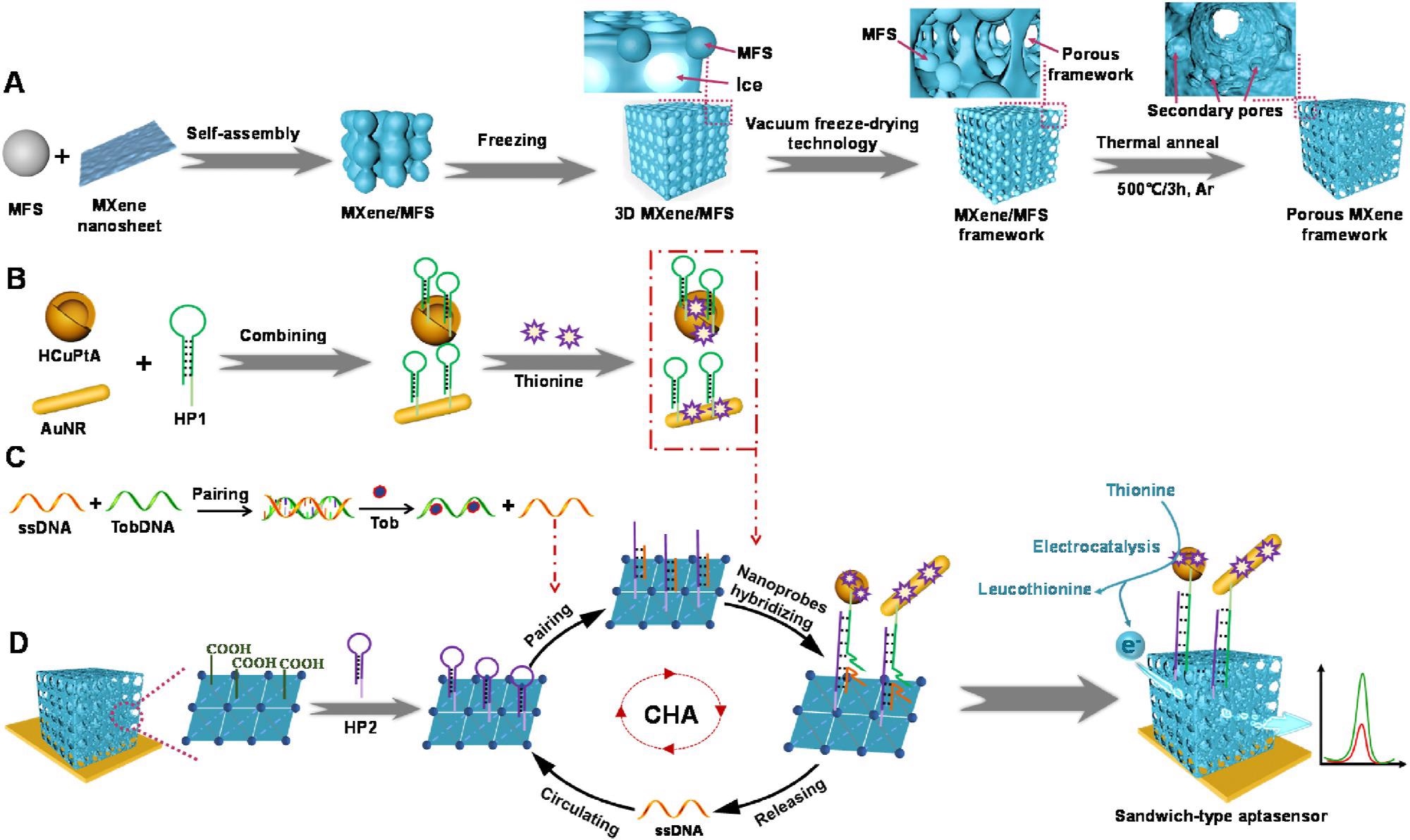Prof. Zhengyan Wu of the Chinese Academy of Sciences’ Hefei Institutes of Physical Science headed a team that created a high-sensitivity electrochemical aptasensor for detecting thrombin in serum.
 Schematic illustration of detection mechanism based on self-prepared aptasensor. Image Credit: YANG Pengqi.
Schematic illustration of detection mechanism based on self-prepared aptasensor. Image Credit: YANG Pengqi.
Researchers created this ultrasensitive electrochemical aptasensor for picomolar thrombin measurement using synchronous coordination of the triple signal amplification technique. The findings were reported in the journal Biosensors & Bioelectronics.
Thrombin is a proteolytic enzyme that stimulates blood clotting by catalyzing the transition of fibrinogen to fibrin. Leukemia, thrombotic disorders, vascular wall inflammation, Alzheimer’s disease and a variety of other diseases are all linked to it.
Humans and other animals do not generally have thrombin in their blood. During coagulation, it is converted from prothrombin. As a result, precise detection of low-dose thrombin is essential for the diagnosis, treatment and evaluation of therapeutic efficacy in disorders involving thrombin.
The researchers used a Ti3C2Tx (titanium carbide) MXene multilevel highly porous as the sensing material and a metallic nanoprobe as the signal amplifier while developing the sensor. The porous structure has more electronic transport channels, and the nanoprobe has a stronger electrocatalytic effect, both of which contribute to boosting the sensor’s response signal.
The technique was further described by Pengqi Yang, a Ph.D. student who did the research. Catalytic hairpin assembly processes of DNA were activated by the presence of picomolar-level thrombin to bridge thionine-labeled Au nanorob or hollow Cu-Pt alloy nanoprobes on the highly porous Ti3C2Tx MXene framework with controllably secondary pore structures.
The sandwich-typed aptasensor performed well, with a linear range of 2 pM to 10 nM for thrombin and a low detection limit of 0.67 pM.
Researchers discovered that when they used the sensor to detect low-concentration thrombin in blood, it could not only detect thrombin at picomolar concentrations but also had good anti-interference and stability against a variety of physiological compounds.
The sensing platform established in this study can be customized to analyze other biological or environmental substances. What’s required is to rationally design the DNA sequences of target-binding aptamer.
Pengqi Yang, PhD Student, Hefei Institutes of Physical Science, Chinese Academy of Sciences
Anhui Province’s University Synergy Innovation Program, Shandong Province’s Special Project of Central Government for Local Science and Technology Development, and Anhui Province’s Key Laboratory of Environmental Toxicology and Pollution Control Technology’s Open Research Fund all contributed to this study.
Journal Reference:
Yang, P., et al. (2022) Picomolar thrombin detection by orchestration of triple signal amplification strategy with hierarchically porous Ti3C2Tx MXene electrode material-catalytic hairpin assembly reaction-metallic nanoprobes. Biosensors & Bioelectronics. doi.org/10.1016/j.bios.2022.114228.